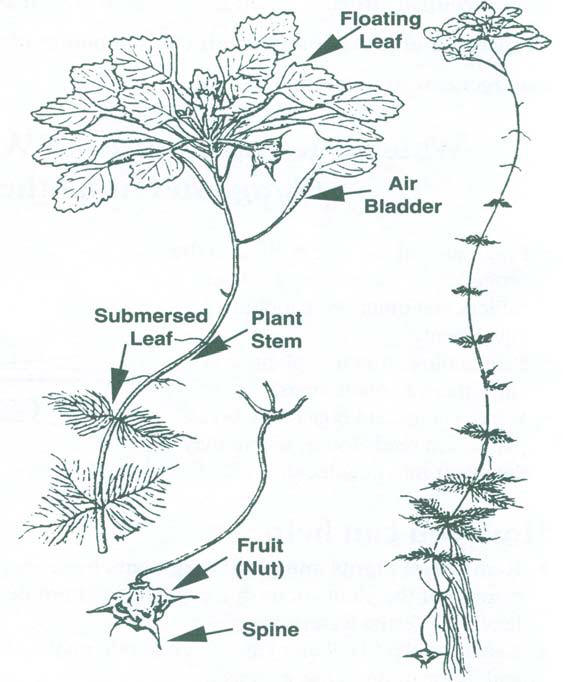Prevent Water Chestnut from spreading to Lake Hopatcong
Help prevent the spread of an extremely aggressive, non-native aquatic plant called Water Chestnut (trapa natans) that is rapidly taking over nearby Lake Musconetcong. The first step is to educate yourself, your family and friends and everyone that enjoys Lake Hopatcong on how to identify the plant. Second, if you find the plant on the Lake Hopatcong, contact the Lake Hopatcong Commission immediately at 973-601-1070. The majority of the pictures below were photographed in June, 2009 at nearby Lake Musconetcong which is located 1-1/4 miles downstream from Lake Hopatcong. We must all work together to prevent Water Chestnut from spreading to Lake Hopatcong. Besides understanding how to identify and report the plant species, recreational users should take appropriate steps to prevent the spread of nuisance aquatic species between water bodies and learn how to stop aquatic hitchhikers. Print a copy of the water chestnut brochure to keep on your vessel to easily identify the invasive species and follow the simple steps to report Water Chestnut to the Commission.
Water Chestnut: A guide to identify and report brochure
A.I.R. - AVOID, IDENTIFY, REPORT sightings of Water Chestnut
Read about the dedicated effort of the Knee Deep Club Water Chestnut Scout Project to combat Water Chestnut on Lake Hopatcong through their volunteer Water Scouts initiative.
Visit the Rutgers Cooperative Extension of Morris County Water Chestnut site for more information including a in-depth presentation, fact sheet and a Water Chestnut reporting form.
Want to see how water chestnut can take over a lake. Take a look at this YouTube video of a volunteers removing a form of Water Chestnut from Lake Delmont which is 100 miles southwest of Lake Hopatcong, outside of Allentown, Pennsylvania.

Aquatic Plants of New England Series: Trapa natans L.
Crow and Hellquist 1983. Illustration by Pam Bruns.
| Simple Procedure are available from The Stop Aquatic Hitchhikers web site which is part of the ANS Task Force public awareness campaign and is sponsored by the U.S. Fish and Wildlife Service and the U.S. Coast Guard. |
|
Media coverage on Water Chestnut
Survey finds no Water Chestnuts in Lake Hopatcong," northjersey.com, July 23, 2010
"Lake Hopatcong Commission on the lookout for the dreaded water chestnut," nj.com, July 22, 2010
"How Did the Water Chestnut Search Go? A Recap from Tim Clancy," lakehopatcongnews.com, July 18, 2010 (see links at the bottom of the article for other lakehopatcongnews.com articles on water chestnut)
"Water chestnut survey of lake brings good news," northjersey.com, June 18, 2010
"Knee Deep Club declares war on invasive plant," northjersey.com, May 21, 2010
"Prevent the spread of water chestnut to Lake Hopatcong," northjersey.com, July 30, 2009
Are you interested in identifying the types of native and non-native aquatic plants found in Lake Hopatcong or learn about other aggressive species that could find their way to Lake Hopatcong? If so, the Identification Manual of Aquatic Plants in Lake Hopatcong and Potential Future Invasive Species is a great learning tool.
Updated: 02/14/2012